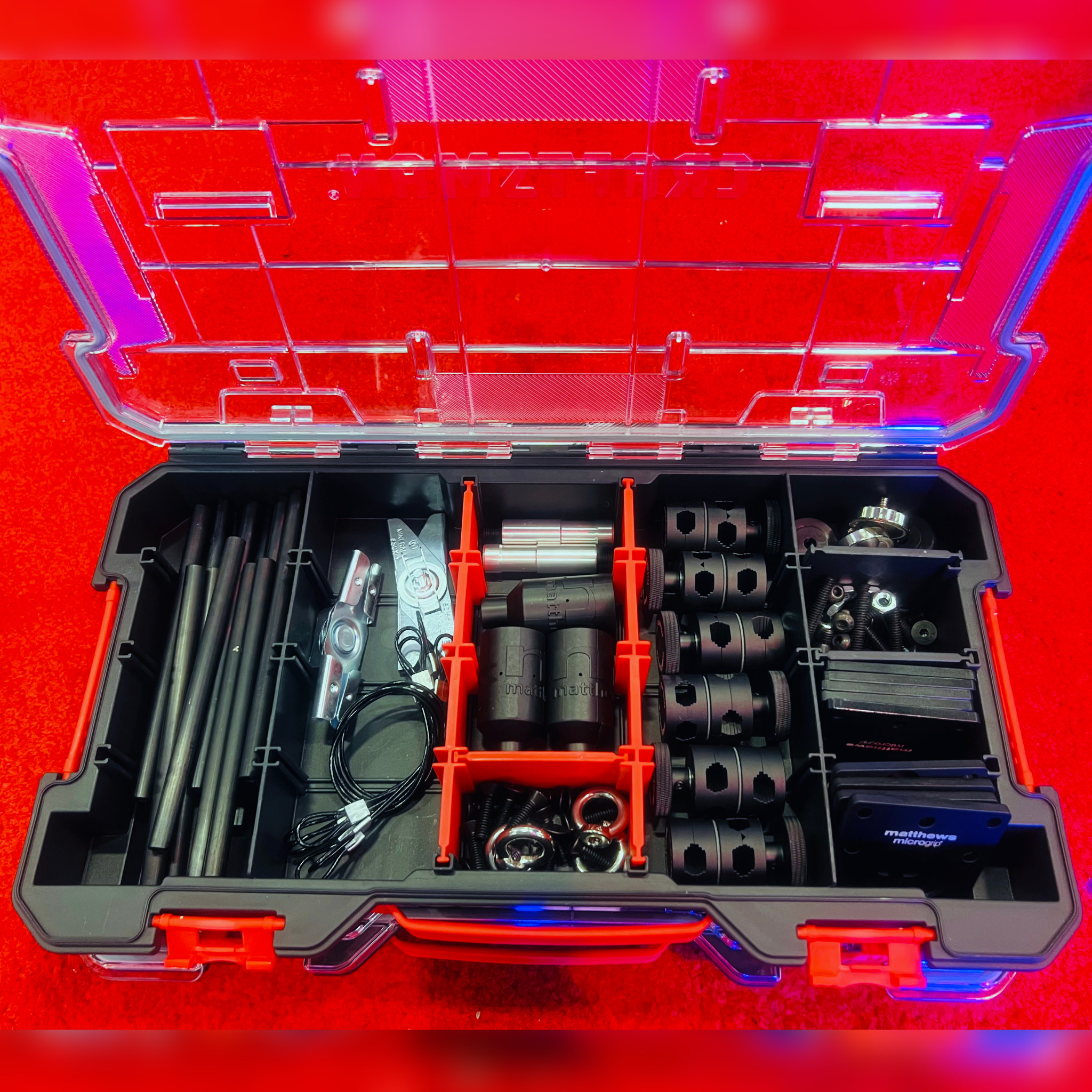AMI Pushes Local Interactive Ads

Gary Arlen
BETHESDA, MD. “The Holy Grail of advertising is still the living room on the high-definition TV set,” said Nick Meyers, vice president of sales and business development at Denver-based Accelerated Media Inc., which creates interactive advertising and on–demand local content, including newscasts, for broadcasters and other media firms. “Now that those sets are more connected to the Internet, there is the opportunity to be interactive as you couldn’t do before.”
“The push for the past year has been to get a localized message,” Meyers added, citing the work that his company has done for TV groups including Fox’s owned-and-operated stations, Fisher Communications, Hubbard Broadcasting and Capitol Broadcasting.
At the core of these projects has been Accelerated Media’s Companion Ad Network, an advanced TV ad platform that inserts local and national advertising into companion apps—including smart TV apps as well as apps for tablets and smartphones.
“The CAN gives programmers additional ad inventory and gives advertisers new inventory within companion apps,” said Meyers, citing the ability to deliver pre-roll ad units, interactive ads (an app within an app) and addressable ads.

Nick Meyers His pitch to advertisers focuses on the “immersive brand experience” all on the TV screen.
ECONOMIES OF SCALE
“When we build applications for a broadcast station, they are not getting just one platform,” said Meyers. “We simultaneously build the app on all four of the most significant footprints: Yahoo!, Samsung, Google TV and (coming soon) the Smart TV Alliance, all for one fee.”
Accelerated Media has built apps for broadcasters’ local news, weather, traffic and other content, in the process achieving “economies of scale,” Meyers said.
Accelerated Media is part of the year-old Smart TV Alliance, which is defining technical specifications. The group’s software development kit lets application developers create apps that run on multiple TVs regardless of the platform. Through Alliance connections, Accelerated Media has established relationships with Samsung, Vizio, LG and other manufacturers to install its apps onto those brands of smart TV sets, making them ready for viewing in markets where a broadcaster is transmitting TV apps.
Meyers claimed that the relationships with TV set makers helps enable broadcasters to deliver their interactive ad and news content at a very low cost—a fraction of the price of conventional app development, although he declined to specify the prices.
Accelerated Media, formerly known as Accelerated Interactive Media, has been working on advanced TV features for more than a decade. Its earlier (and still ongoing) projects involve interactive development for cable networks.
Even as the company focuses on its broadcast app ventures, it is implementing “EagleVision,” a set-top box add-on device aimed at small- and medium-sized cable companies. The device, built by Technicolor, with Accelerated Media creating the software and middleware, enables cable operators to provide interactivity by connecting an existing set-top box to any TV set (“smart” or not). It has HDMI input and output connectors and the capability to capture Automatic Content Recognition data triggers for supplemental information.
“It makes a regular TV into a smart TV,” said Meyers.
The first “beta” prototypes of the EagleVision box came out in late July; the next step is a field trial at three cable companies. Accelerated Media is working with the National Cable Television Cooperative Inc. to test the devices during the coming months.
The pickup of Accelerated Media’s schedule coincides with continuing research findings about growing use of apps and simulmedia, as well as multiplatform video consumption.
For example, comScore’s latest online video usage figures showed impressive adoption by American viewers: 183 million Americans—about 85 percent of the U.S. Internet audience—tuned into online video during June. Collectively, they watched more than 44 billion online videos. Most significantly, video ad views topped 20 billion, up from 15.8 billion the previous month; comScore observed that video ads accounted for 31 percent of all video viewing and 3 percent of all minutes spent watching online video. The duration of the average online content video was 5.3 minutes, while the average online video ad was 0.4 minutes, comScore found.
AND THERE’S MORE
Separately, a Parks Associates study in July observed that 14 percent of smartphone/tablet users had recently used a TV content app. The research concluded that “consumers are developing preferences for TV-content apps,” citing the growing pool of apps to accompany shows such as “Glee” and “The Walking Dead” as well as apps from MTV, Nickelodeon, USA Network and other networks.

WNYW-TV Main interactive screen for smart TV, developed by Accelerated Media Parks’ study found that nearly 75 percent of these users are satisfied with this app experience and that the most frequently used apps included purchasing music or merchandise related to shows.
“The latest round of apps is from content providers, not satellite and cable-TV companies,” said John Barrett, Parks’ director of consumer analytics. He cited programmers’ desire “to increase viewer loyalty… and enhance the viewing experience.” Parks also acknowledged that “the most important implication may be for advertising.”
While both the comScore and Parks studies encompassed all types of online video—not just TV-related content or material watched on smart TVs—the continually expanding adoption of on-demand video bolsters Meyers’ outlook for his company’s services. He points out that Netflix, Hulu, Pandora and other online video providers have “been telling viewers to watch us on their connected TV sets, not just tablets.”
“That has driven a lot of usage” to smart TVs, he observed.
Meyers expects the growing appeal of TV-centered online video as being most attractive to traditional broadcast advertisers, especially automotive and consumer packaged goods clients. Accelerated Media has worked with Ford, Lincoln, Clorox, American Express and other advertisers on second-screen projects.
“There’s money to be made if we can localize a campaign,” he said, citing streaming solutions that allow advertisers “to leverage the local car dealer ad buys.”
Meyers also cited other national brands with a local presence, such as furniture stores, fast food and other franchises. “They can leverage the national buy with a localized message on the smart TV,” he said.
It is “critical” for TV stations to promote their video apps, constantly reminding viewers that additional material—both news and advertising—is available on their smart TV sets, said Meyers. With the advanced analytics (which Accelerated Media also provides), broadcasters can track how the on-demand content supplements the linear telecasts.
For its first TV news offerings, the company has worked with Fox stations and WRAL-TV (Capitol Broadcasting’s Raleigh, N.C., station) to offer a livestream option. Meyers cited examples of extended news coverage during emergency news events.
“When a station returns to its ‘regularly scheduled programming,’ it can advise viewers to go to apps on their smart TV or other devices to continue watching the news reports,” he explains. For commercials, including national spot ads, the station can point viewers to on-screen widgets for a local dealer, including scheduling test drives.
While such concepts have floated around the interactive TV and online realm for decades, Meyers believes that today’s widespread adoption of smart-TV apps finally makes these services viable.
“Fragmentation is starting come together,” he said, citing the work of the Smart TV Alliance.
“We see the opportunity as being localized for broadcasters,” concluded Meyers, with enthusiasm.
Gary Arlen is president of Arlen Communications LLC, a media/telcom research firm. He can be reached atGaryArlen@columnist.com.
Get the TV Tech Newsletter
The professional video industry's #1 source for news, trends and product and tech information. Sign up below.
Gary Arlen, a contributor to Broadcasting & Cable, NextTV and TV Tech, is known for his visionary insights into the convergence of media + telecom + content + technology. His perspectives on public/tech policy, marketing and audience measurement have added to the value of his research and analyses of emerging interactive and broadband services. Gary was founder/editor/publisher of Interactivity Report, TeleServices Report and other influential newsletters; he was the long-time “curmudgeon” columnist for Multichannel News as well as a regular contributor to AdMap, Washington Technology and Telecommunications Reports; Gary writes regularly about trends and media/marketing for the Consumer Technology Association's i3 magazine plus several blogs.

